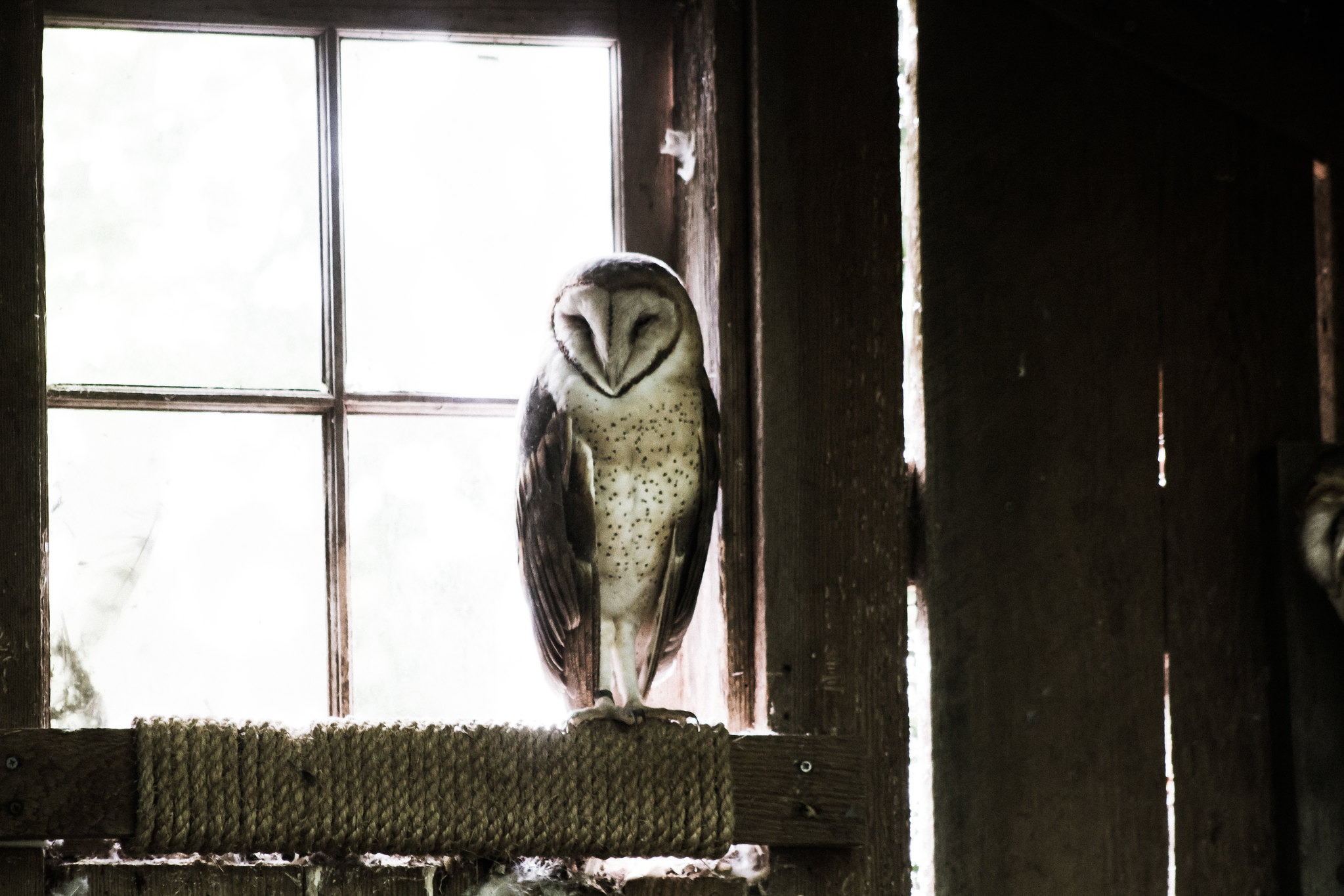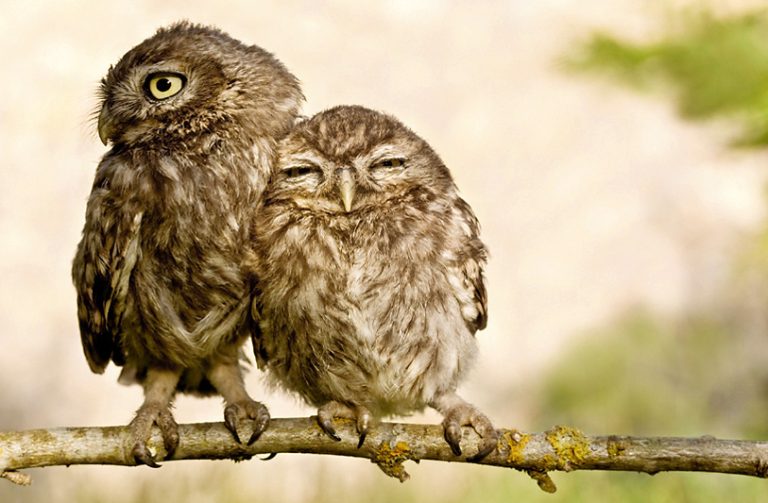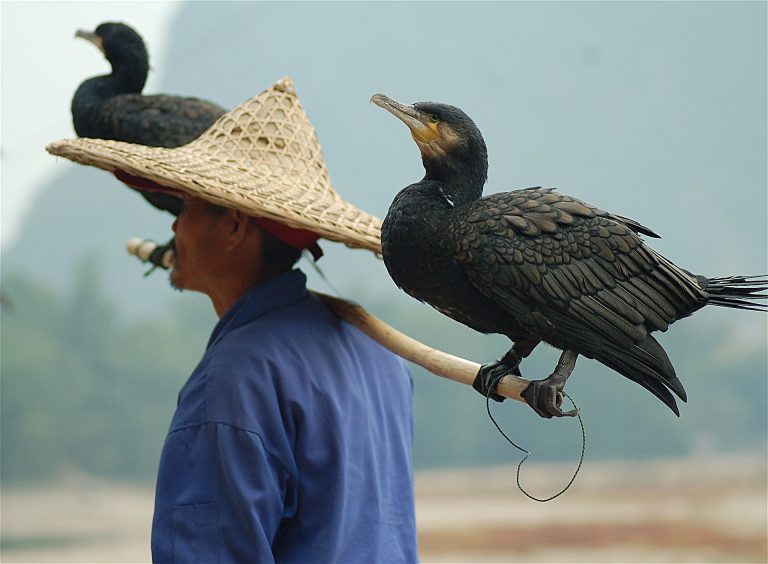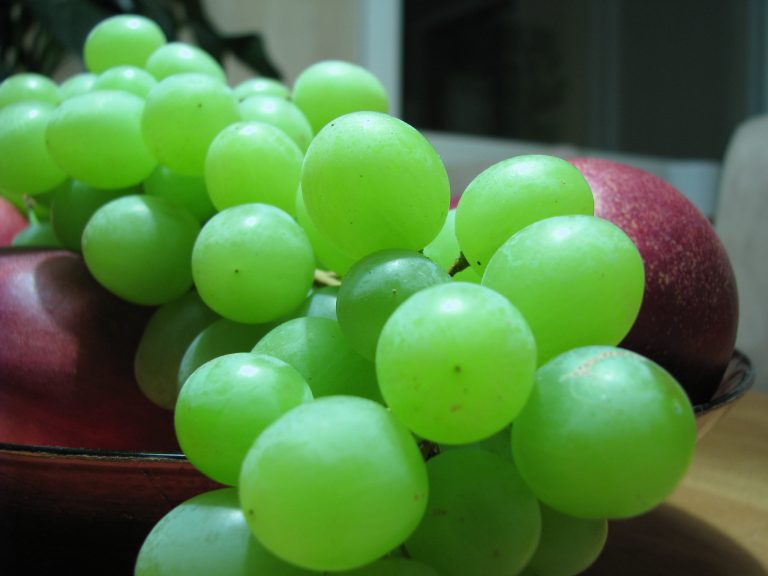Like a great sage, an owl sits stock-still, seeing everything, but saying nothing. When she takes action, it is swift and precise. These bold characteristics have earned the owl both respect and fear among humans; yet any great big eyes set into a fluffy body is sure to have broad visual appeal as well.
Whether we see them as cute or creepy, wise or wicked, the owl image has been replicated countless times over the ages, and seems to only grow in popularity. Let’s see what we can learn about — or from — these captivating creatures.
Owl basics
Owl species span nearly two dozen genera in two separate families: Tytonidae, which includes 16 or more species of barn owls, and Strigidae, which accounts for over 200 species of typical, or “true owls.” The barn owl is easily identified by its heart-shaped face, dark eyes, and long legs. Most of these medium-sized birds hunt only at night, feeding on small mammals. Barn owls are distributed throughout the world.

True owls vary tremendously in size, but all have relatively short legs and large heads, featuring facial disks around their prominent, orange or yellow eyes. The great horned owl (Bubo virginianus), with a wingspan up to five feet, the medium-sized barred owl (Strix varia), and the compact screech owl (Megascops sp.) are some of the most common typical owls in North America.
One of the most remarkable characteristics of owls is their ability to rotate their heads to seemingly impossible positions. Because their large eyes are tubular — rather than spherical like ours — they can only look straight ahead. Owls make up for this visual handicap with a neck that rotates an extraordinary 270 degrees in some cases — that’s exactly three times the range our necks can rotate!
Success
You are now signed up for our newsletter
Success
Check your email to complete sign up
Owls have disproportionately strong talons, suitable for grasping all manner of squirmy rodents, their primary food source. Owls’ coloring and silent flight make them virtually undetectable to their prey; which, like carnivorous reptiles, they swallow whole. After digestion is complete, “pellets” containing the remaining bones and fur or feathers are regurgitated.
Like most birds of prey, female owls are larger than the males. Owls are usually monogamous, but few build their own nests. Barn owls, as the name implies, frequently make their homes in barns or similar structures, while typical owls often use nests abandoned by other birds.
Depending on the species, the female may lay up to a dozen eggs. Male owls feed their mates during the incubation period, which can last up to 32 days. Owlets are fed bits of regurgitated prey, with the strongest offspring getting preferred treatment. When food is scarce, weak or unhealthy young often starve.

Wisdom and intelligence
We often measure animals’ intelligence by how much they can learn from us. Dogs, dolphins, many birds, and even octopuses can be trained to solve problems; yet the owl is virtually impossible to train. This hardly means they are dimwitted. Perhaps, like the aloof cat, they consider themselves above doing tricks for treats.
“There’s always a hidden owl in knowledge.”
E.I. Jane
Owls are clever enough to be excellent hunters and resourceful homemakers, but their intelligence may be of a deeper sort — called wisdom. This concept is integral to almost all cultural symbolism surrounding owls.
Ancient cultural symbolism

Egypt
Traditionally tied to the mysteries of death and darkness, owls were regarded with fear and reverence by ancient Egyptians. Not only were owls frequently depicted in works of art, they were sometimes embalmed as mummies, and they make up a key letter of the hieroglyphic alphabet.
It was believed that they protected the Truth, and kept the unworthy from obtaining higher wisdom.
Native American
Similarly, in Native American culture, owls are associated with death and the spiritual world. Prophecy and divination were common owl traits; but the birds were regarded somewhat differently by different tribes. Some Indigineous people saw owls as transmitters of ancient knowledge and supernormal wisdom, while others — like the Dakota and Lanape — saw owls as protective spirits.
The Burrowing Owl, which nests underground, was the Hopi tribe’s god of the dead. It protected the underworld and looked after earth-bound beings, like plants. Many tribes — including Cherokee and Lakota — viewed owls as embodied spirits, or shapeshifters, often bringing bad omens.
In any case, owls’ spooky calls and nocturnal habits made them effective teachers, as parents would warn their children not to wander out at night, lest an owl snach them, or their souls, away.
China
There is also superstition among the Chinese about owls being soul-snatchers, and various measures are used to keep them away from the home — like turning brooms upside down, or burning brush to generate offensive smoke.
The Chinese characters for owl — 猫头鹰 (Māotóuyīng) — translate literally to “cat head hawk,” an apt description in both looks and mannerisms.
Despite owl phobias and their strong association with death, owls have long been respected in China, and sometimes called on for protection.

Owls have held a presence in Chinese culture since at least the Shang Dynasty (1600-1046 BC). Various owl artifacts were discovered from this period in Shanxi, Hubei and Hunan provinces, as well as in Yinxu, the remnants of the Shang Dynasty’s capital city, Yin, located in present Anyang, Henan Province.
The owl’s mystical aura also lends itself to Feng Shui, the ancient Chinese practice of geomancy. Owls represent yang energy, and are considered protective, wise and intuitive. Yang energy is expansive and positive, used both to bring good luck and abundance, and also to repel and balance negative yin energy. Keeping an owl image near an entrance can give a sense of security. Placed in a work area, owl symbols can enhance one’s intellect and insight.

Ancient Greece
Perhaps the most famous owl is Athena’s avian sidekick. The Greek goddess of wisdom is most often depicted with a small owl, either in person or as decoration on her gear.
The ancient Greeks believed that an owl possessed an “inner light,” or wisdom, that allowed it to see at night. This wisdom is deep and spriritual, almost divine. It is said that the owl, Athena noctua, helped the goddess to see through her blind spot, giving her the ability to see the whole truth in all circumstances.
Owls in Christianity
In Biblical terms, the owl can symbolize desolation, torment, death, loneliness and judgement. Owls could be seen both as dark omens, and signs of moral stuggle — or opportunities to demonstrate one’s convictions. There is mystery behind darkness, and examining it can bring great wisdom.
Here, the association with death may not be in the physical sense, but rather a symbolic end to one thing that may open new doors to others. In this way, owls can represent change, transformation and renewal. By letting go of one’s ego, in particular, one can reach higher spiritual realms, opening up profound knowledge and intuition.
“The owl is nocturnal with keen senses of sight and sound. It sees through the shadows of the night and hears the sounds in the silence; the illusion of the darkness. This teaches us to see past our own illusions and trust our intuition and perceptive senses.”
Anonymous

Beneficial predators
Spirituality aside, the fact that owls are skilled hunters of rodents makes them extremely useful for human pursuits. They provide natural pest control for homes, gardens, farms and resorts. Tragically, the use of poisons to deter pests often kills their natural predators — including, owls, hawks and other raptors — ultimately creating a far worse pest problem.
Responsible agricultural practices strive to improve the earth and the environment for future generations. Napa Valley farmers have adopted barn owls as their chief guardians against rodents. By providing the right conditions, and with a little luck, you might attract owls to protect your property as well. Living owls are a thousand times better than pesticides, and beautiful to boot.
How to attract an owl to your property
The four basic requirements for owls — and any bird, really — are food, shelter, nesting sites and water.
Food
As we know, owls are hunters. They don’t go for bird feeders, though they could potentially go for the birds that feeders attract. The best way to feed an owl is provide a steady supply of rodents. Leave some remote areas of your garden unkempt, allowing nature to return to an ecological balance where each member of the food chain can play its part, uninterrupted. Resist the temptation to trap rodents while you await your owl, and avoid the use of poisons. Ask your neighbors to do the same.
Shelter
A grove of mature trees make an appealing daytime roosting site for owls. They like a quiet, shaded area where they can rest in safety. As much as possible, leave bare branches for perches, and let dead trees decay to become natural cavities.
Most trees grow faster than you would imagine; so don’t abandon the idea for the lack of trees. Barn owls are just as comfortable in a man-made structure, like a barn.
Nesting site
Next, you need the appropriate accommodations for nesting. Hollow trees are optimal nesting spots for a wide range of owls, but they will also use nesting boxes. Just like other birds, you can attract a targeted type by erecting a custom-made house built to their specifications. Monitor your nesting box to keep other animals from squatting there before your owl comes.
Click here for instructions to build various owl houses
Water
Many owls can eat several rodents per day, providing a good portion of their hydration. While owls don’t drink much, or frequently, they do like to know that water is available. A large bird bath, small pond or a creek will be sufficient if the water is herbicide-free. A man-made pond should have a pump to circulate the water, and a few goldfish to control mosquitoes.
Other than that, all you need is patience. Avoid artificial attractions like imported rodents and recorded calls. As much as possible, try to achieve a natural, rustic appearance, without exterior lighting, active pets, or netting of any sort.
With or without an owl in our lives, we can all take inspiration from their thougthful demeanor.
“A wise, old owl sat in an oak. The more he saw, the less he spoke. The less he spoke, the more he heard. Why can’t we be like that wise old bird?”
Edward Hersey Richards













